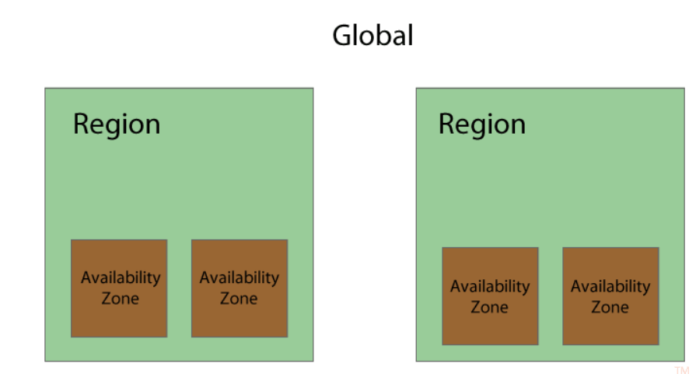As soon as you start using AWS you will come across regions and availability zones. It is important that you understand the key differences so that you can architect fault tolerant applications.
AWS Regions & Availability Zones
Regions – located in separate geographic locations
Regions are easy to understand. They are completely isolated from each other and are in different parts of the world. At the time of writing this article there are 8 regions to choose from. They are shown with the orange dots below:
AWS Infrastrucutre Map
Info: There is actually an extra region called the AWS GovCloud region but this can only be used by government agencies
How do you choose which region to use?
AWS Regions List
Firstly not all services are available in all the regions. To find out if a service is available in a particular regions see http://aws.amazon.com/about-aws/globalinfrastructure/regional-product-services/. In most situations it is best to deploy your application as close to the end user as possible. For example, if most of your users are from the UK it would be best to use the EU (Ireland) region. Other things to keep in mind are legal requirements and cost (not all the regions are prices the same).
All the main AWS services (except Route 53 & CloudFront) allow you to select which region you would like to use. The US East (N. Virginia) is the default region. You can change the region by using the dropdown menu in the top right of the management console.
Availability Zones – isolated from failures in other availability zones
Although unusual, failures do happen. AWS therefore provides availability zones that are isolated from each other (they have low latency connections). Deploying your application across multiple availability zones makes you ready for unexpected outages. So if there is an outage with a particular availability zone your application stays online.
Edge Locations – used by content delivery network (Cloudfront)
Although you won’t have to worry about edge locations directly they are still an important part of the AWS infrastructure. There are currently 40 edge locations with more being added each month. They are located in most the major cities around the world and are used by CloudFront (CDN) to distribute content nearer to the end user.
To learn more about the services AWS offers take a look at AWS Services for Beginners
If this article has helped you or if you have a question, leave a comment below.








